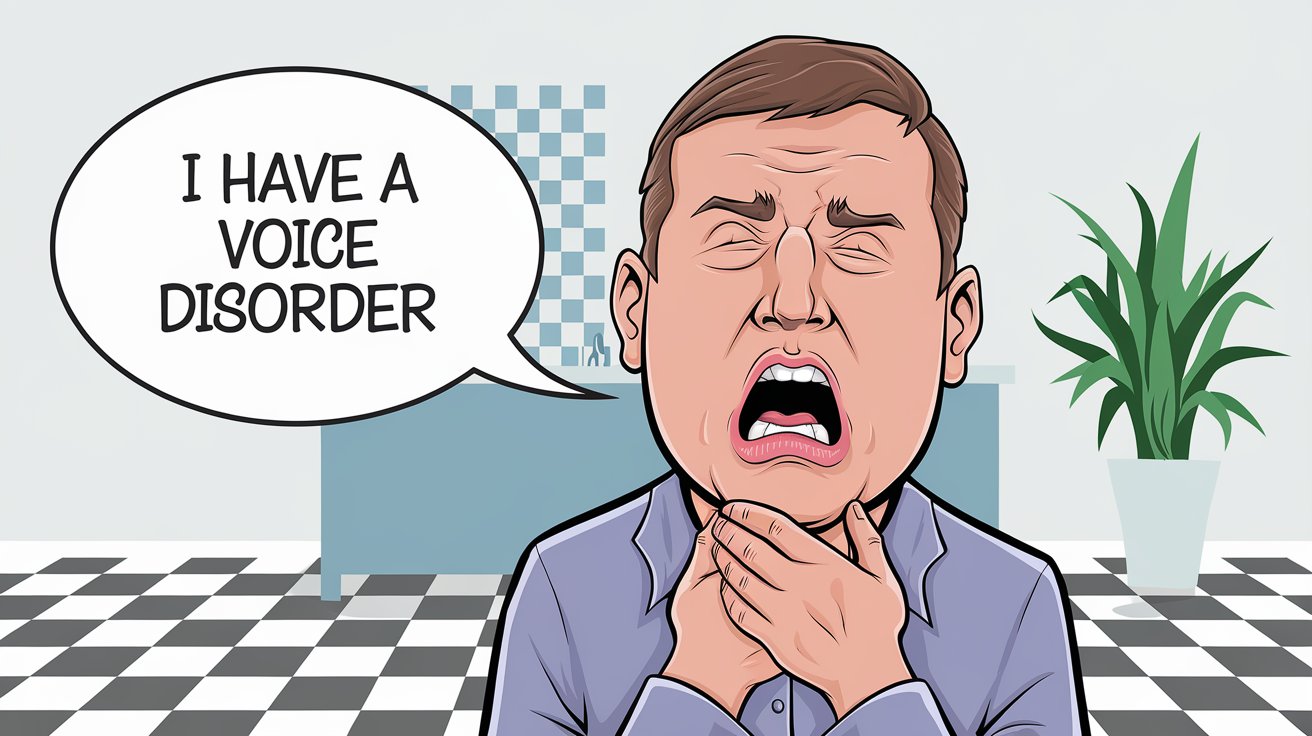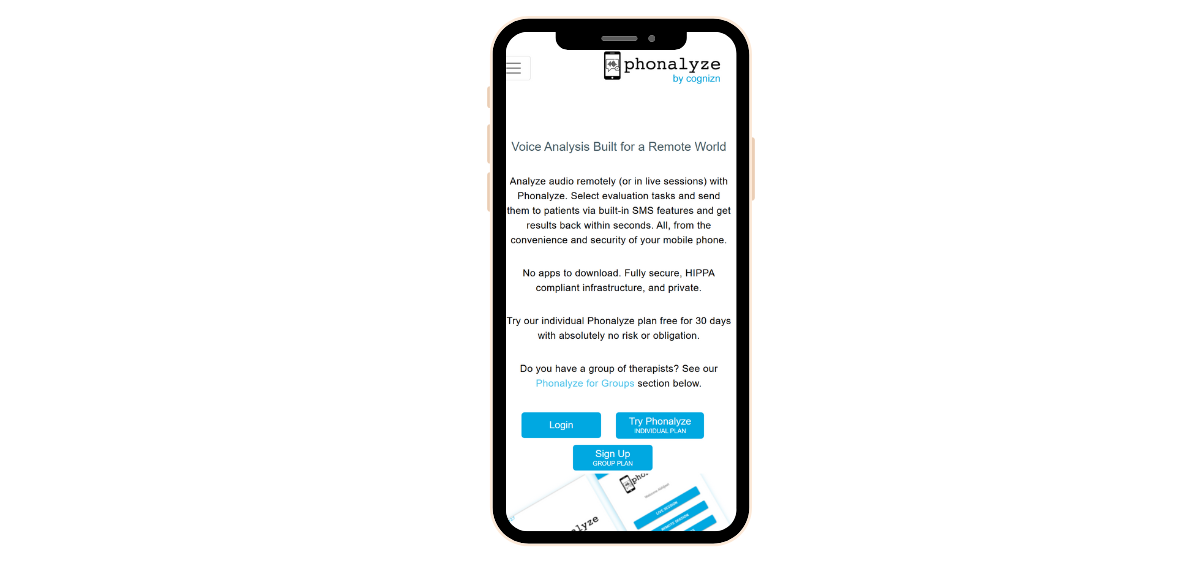What is a Voice Disorders?
TL;DR: Voice disorders impact pitch, loudness, and vocal quality. Speech pathology therapy, along with tools like Phonalyze, offers targeted assessment and treatment—especially useful for remote care. Learn how to spot symptoms early and how to get help.
What counts as a voice disorders and how can it affect daily life?
A Voice Disorder is a medical disorder which influences a persons voice pitch, quality, or volume. In cases of voice disorders, the ability to use one’s voice for communication is hampered, impacting both personal as well as professional life. Voice disorders are common and can affect people of all ages, young and old. Getting familiar with what defines a voice disorder is an important step in identifying when treatment may be needed.

What are the different types of voice disorders and their causes?
Voice disorders can be classified into three main categories, each with unique causes and symptoms:
- Functional Voice Disorders : These occur when the vocal cords are used ineffectively, usually without any structural abnormalities in the larynx.
Examples: Muscle tension dysphonia (MTD) is a common voice disorder caused by excessive tension of the laryngeal muscles.[1] - Organic Voice Disorders: These are caused by physical changes or abnormalities in the structure of the vocal cords or surrounding areas.
Examples: Vocal nodules, polyps, cysts, and laryngitis-related swelling. - Neurological Voice Disorders: These disorders occur when there is a problem with the nerves that control the vocal cords. Conditions such as spasmodic dysphonia and vocal fold paralysis fall under this category.
Examples: Spasmodic dysphonia, vocal fold paralysis.
Each type requires a specific diagnostic and treatment approach, making consultation with a speech-language pathologist essential.
Causes and Risk Factors
Various factors can contribute to the development of voice disorders. Understanding these causes and risk factors can help in prevention and early intervention. Common causes and risk factors include:
- Vocal Strain and Misuse: Overuse of the voice through yelling or prolonged loud talking can strain the vocal cords.
- Environmental Factors: Tobacco smoke, pollution, and irritants can dry or damage vocal cords.
- Infections and Allergies: Respiratory infections or allergies can inflame vocal cords and disrupt normal function.
- Gastroesophageal Reflux Disease (GERD): Stomach acid irritating the esophagus can harm the vocal cords.
- Medical Conditions: Issues like thyroid disorders, hormonal changes, and neurological conditions can affect vocal quality.
- Lifestyle Factors: Poor hydration and an unhealthy diet increase the risk of voice disorders.
Individuals who frequently use their voice extensively, such as teachers, singers, and public speakers, should be aware of these risk factors and practice vocal hygiene to reduce the likelihood of developing voice disorders
How does Phonalyze help speech pathologists manage voice disorders?
Phonalyze offers cutting-edge tools to support speech pathologists and their patients in diagnosing, treating, and monitoring voice disorders. Developed in collaboration with leading experts and medical institutions, Phonalyze provides:
- Comprehensive assessment modules for accurate diagnosis.
- Tailored treatment plans designed for individual needs.
- Real-time progress tracking for effective therapy outcomes.
- This platform empowers speech-language pathologists to deliver high-quality care, ensuring better vocal health for patients worldwide.

Key Benefits of Using Phonalyze
1. Simplified Remote Assessment
- Patients can complete voice tasks from the comfort of their homes.
- No app downloads required – works directly through web browsers.
- Real-time voice recording and analysis capabilities.
- Secure, HIPAA-compliant environment for all assessments.
2. Comprehensive Voice Analysis Tools
- Advanced analysis of voice parameters using PRAAT technology.
- Detailed metrics for pitch, loudness, and voice quality.
- Automated reporting features for tracking progress.
- Easy-to-understand results presentation.
3. Convenient Patient Management
- Therapists can assign specific voice tasks to patients.
- Automated task reminders for better compliance.
- Secure storage of patient voice recordings.
- Easy access to historical data and progress tracking.
4. Enhanced Treatment Efficiency
- Quick generation of voice analysis reports.
- Time-saving remote assessment capabilities.
- Easy sharing of results between healthcare providers.
- Flexible scheduling of follow-up assessments.
Making Voice Therapy More Accessible
Phonalyze breaks down traditional barriers to voice therapy by:
- Eliminating the need for frequent in-person visits.
- Providing instant access to voice analysis tools.
- Enabling continuous monitoring between sessions.
- Supporting both synchronous and asynchronous therapy models.
Supporting Both Patients and Practitioners
For Speech Pathologists:
- Streamlined workflow management.
- Detailed analytical tools for accurate assessment.
- Easy documentation and progress tracking.
- Efficient patient communication tools.
For Patients:
- User-friendly interface.
- Flexible task completion from any location.
- Clear progress visualization.
- Secure access to personal voice data.
Individual and Group Therapy Speech Pathology:
- Phonalyze available for Individual plan
- Try our individual Phonalyze plan free for 30 days with absolutely no risk or obligation.
- Its also available for Group plan for Group Therapy
How Speech Pathology Addresses Voice Disorders
Within the realm of communication disorders, speech pathology plays a crucial role in addressing and managing voice disorders. These isorders can significantly impact an individual’s ability to communicate effectively. Speech pathologists are specially trained professionals who assess, diagnose, and treat various voice disorders through a combination of scientific techniques and personalised care.
Assessment and Diagnosis
The first step in addressing a voice disorder through speech pathology is a comprehensive assessment and diagnosis. This process involves a thorough evaluation of the patient’s vocal function, which may include:
- Case History: Gathering detailed information about the individual’s vocal habits, medical history, any previous vocal issues, and lifestyle factors.
- Perceptual Assessment: Listening to the voice and judging aspects such as pitch, loudness, and quality.
- Instrumental Evaluation: Using specialized equipment like a laryngoscope or stroboscopy to visually examine the vocal cords and assess their function.
- Acoustic Analysis: Measuring voice parameters using computer-based software to provide objective data. These methods help speech pathologists identify the nature of the voice disorder, whether it is organic (due to physical changes) or functional (related primarily to use and habits). Accurate diagnosis is pivotal in crafting an effective treatment strategy
Tips for Maintaining Vocal Health
- Stay Hydrated: Keep the vocal cords moisturized by drinking plenty of water.
- Avoid Vocal Strain: Limit shouting or prolonged loud speaking; use amplification devices if necessary.
- Practice Good Posture: Proper alignment aids respiratory muscles for effective voice production.
- Warm Up Your Voice: Prepare your voice with exercises before extensive use.
- Manage Reflux: Avoid foods and drinks that trigger reflux and wait a few hours after eating before lying down.
- Avoid Smoking and Limit Caffeine: These can dehydrate and irritate the vocal cords.
Conclusion
Voice disorders can significantly affect communication, but with the help of speech pathologists, individuals can overcome these challenges. Through comprehensive assessments, personalized treatment plans, and evidence-based techniques, patients can regain vocal health and confidence. Prioritizing vocal care and seeking professional guidance when needed ensures long-term vocal well-being, empowering individuals to communicate effectively and express themselves freely.
For Read about Voice Analysis Tool: Click Here
Sources
Phonalyze Blog – https://blog.phonalyze.com/
MedBridge – Flow Phonation in Voice Therapy
American Speech-Language-Hearing Association (ASHA) – Voice Disorders
